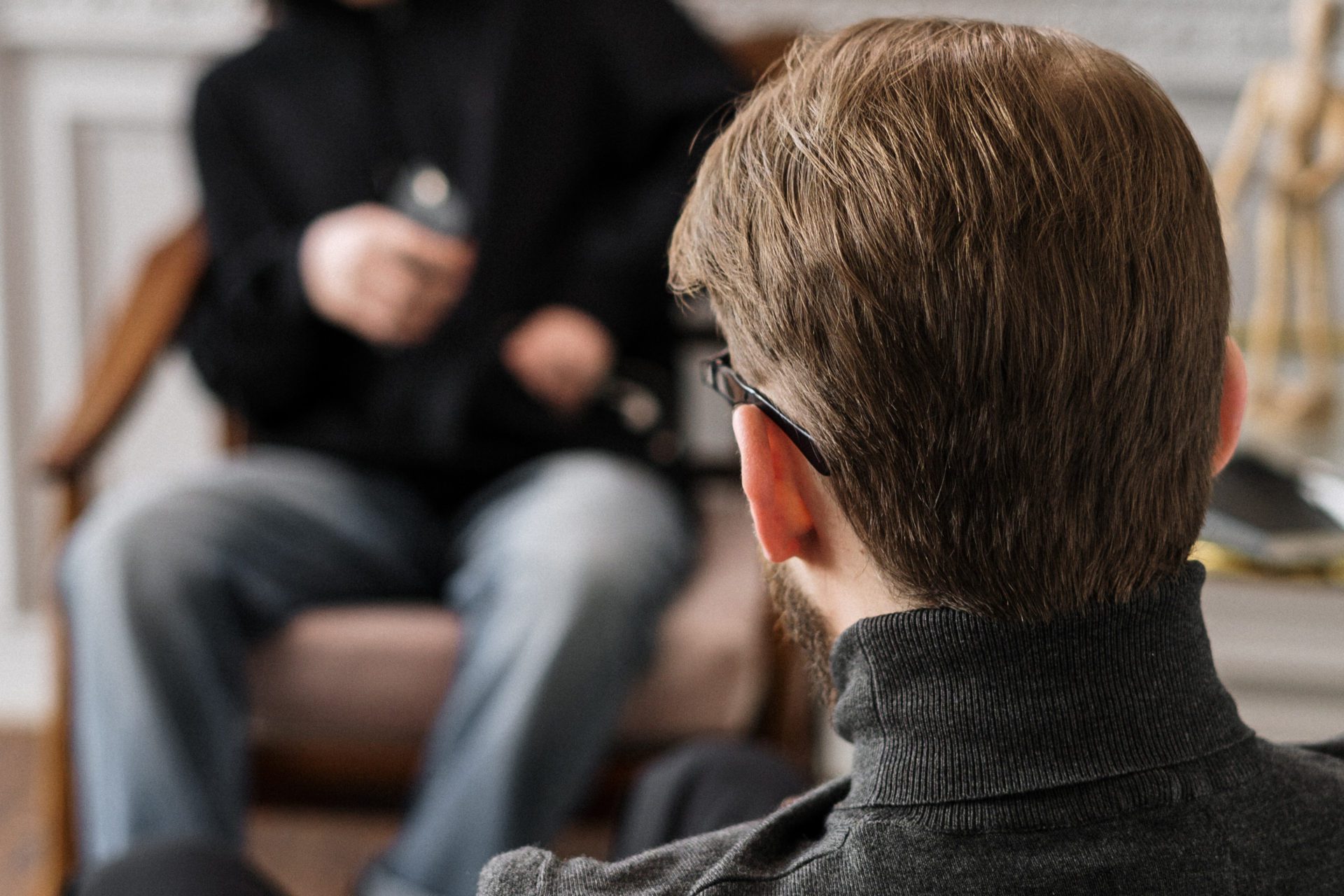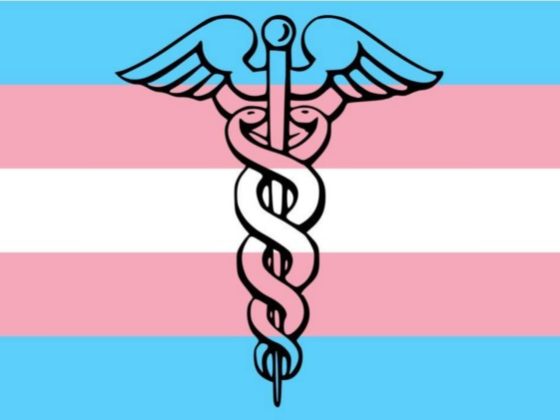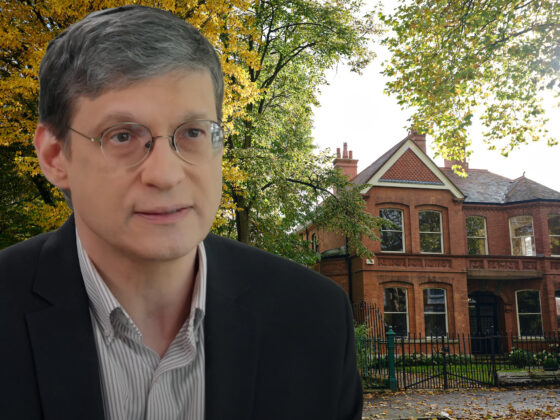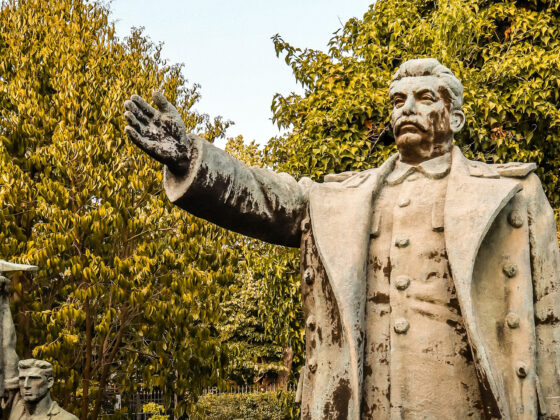The disciplines of counselling and psychotherapy have evolved over the course of many decades into the rich pluralistic field of today. The complex shifting nature of this territory engenders dynamism and creativity but it can also make it susceptible to anti-therapeutic intrusions. Examples of the latter would be the dangerous individuals who slip through the training and regulation net becoming predatory therapists and the occasional development of a destructive approach with a damaging agenda, such as gay conversion therapy. Overall, however, the disciplines have managed their porous borders and internal contradictions in a way that has not compromised the essential therapeutic project. However, with the arrival of Critical Social Justice Theory (CSJT) the field is faced with an intrusion on a much greater scale in the form of an ideology with a political agenda that is currently wreaking havoc in the wider culture. It seems as if the whole field is paralysed and thus has not managed to develop any effective response. In this article I will be arguing that CSJT is now rapidly establishing itself within the theory and knowledge of the counselling and psychotherapy disciplines. I explain why this move is deeply concerning because CSJT is incompatible with the ground of counselling and psychotherapy, i.e., the therapeutic relationship. I will be suggesting a way in which the field can start to defend itself. Due to its distributed nature, CJST lacks any central defining clinical theorists, and this can make it difficult to write about. It can be slippery and hard to pin down. Therefore, for the purposes of clarity, I have awarded CSJT the status of an entity, and by so doing, it is hoped that my line of reasoning is made plain. I begin with addressing the two arguments against the stance taken by this article—first that CSJT is not present in any substantive sense, and, second, that it can be integrated into the field.
CSJT Is Already Present in the Field
To start with the first argument, most people would acknowledge that there are clear signs that the therapy field is engaging with this new approach to achieving social justice: there are increasing references to intersectionality and generally more emphasis on the problematics of counselling and psychotherapy. As discussed in my previous article (Thomas, 2020) we can see how CSJT is beginning to reshape the policies and positions of the professional bodies, but the assertion that it is already established in the field’s theory and knowledge would probably be resisted. One reasonable objection to this assertion would be that It takes a significant amount of time for new ideas to become validated and accepted—this process requires a body of knowledge developed through clinical experience, research findings, and refinement of theory and practice.
This objection misunderstands the stance that CSJT takes towards theory and knowledge production and, even more significantly, the way that it goes about establishing itself in any arena. Its radically different worldview means that, from its perspective, all it needs to do is to assert itself. It does not need to go through the conventional, time-tested, laborious processes of knowledge creation: it can manifest through simply inserting itself into the discourse of the field. Remember for CSJT, social reality is generated out of and maintained through the way we talk about things—the discourse. Furthermore, this worldview is opposed to the current dominant mode of knowledge production, which relies on, amongst other things, empirical evidence and real-world testing of the efficacy of clinical theories. Therefore, all CSJT needs to do is to focus on reshaping the existing narrative. Once a new narrative has successfully entered through a portal into the field, then its claim on the territory is bolstered by academic papers and textbooks. These academic productions then form the basis for citations and thus, through these processes, the new CSJT-informed narrative ostensibly becomes legitimised. To misquote Descartes, the CSJT position on knowledge production is ‘I assert, therefore I am.’
However, the early stages of inserting a new narrative into a discipline are delicate. If CSJT announces its radical nature before it is firmly established then it can be easily removed. A cover is needed to shield the infiltration from view. A common move is a sleight-of-hand strategy that makes use of terms with a double meaning. It will tend to label itself as something which is generally viewed as beneficial but whose meaning can be stretched to accommodate the very different CSJT definition. The term ‘social justice’ is a case in point. In my previous article (Thomas, 2020) I pointed out how, over the course of a couple of decades, usage of this term in the therapy field has shifted from a social justice informed by a liberal ethos to a new CSJT variant. This definition slippage makes it difficult to determine which perspective informs the author’s view. This ambiguity will be retained until the new narrative is secure in its position
The best way to demonstrate this process is through a concrete example, such as the one provided in an American counselling text book produced by Sage, a highly reputable academic publishing house. Published in 2012, (and consequently in the early stages of the narrative insertion project) the book’s title of Social Justice Counseling could easily be referring to the earlier commonly accepted version of social justice. It is only when you examine the text that it becomes clear that the sleight-of-hand strategy is being employed. Consider the following statement, regarding the setting up of an association for Counsellors for Social Justice (CSJ): ‘Thus, CSJ promotes embracing and endorsing a new perspective by acknowledging cultural oppression—such as hetereosexism, racism, sexism, agism, and ablism, and, by providing culturally sensitive counselling while working towards eradicating these types of oppression in the wider society’ (Chung & Bernak, 2011, p. 42). Note how both definitions of social justice are elided together here and the activist agenda which denotes CSJT is added on at the end.
This textbook also provides an example of an undisguised attempt to hijack and reshape the foundational narrative of talking therapies. Chapter three is titled ‘Social Justice as the fifth force: Theories and concepts.’ For anyone familiar with the counselling and psychotherapy field, this title makes an extraordinarily bold claim. The four ‘forces’ in talking therapies refer to very large movements in theory across the last hundred years namely: psychodynamic; behaviouralist (later Cognitive Behavioural Therapy); humanistic; and, more latterly, systemic/contextual (examples being family systems therapies/feminist counselling). These ‘forces’, consisting of loosely associated approaches and methods, are developments in counselling and psychotherapy that have been recognised in retrospect. They are generally accepted as defining the contours of the whole of the field as they have withstood long processes of rigorous testing including: cumulative clinical observations; research; refining of theory and ideas; resolving of internal contradictions; and, most importantly, in the long run proved therapeutically efficacious. In this chapter title, CSJT is demonstrating that it can dispense with all of this and merely assert itself into the field. Here it is, the new kid on the block, unencumbered with any significant clinical thinkers, any set of therapeutic methods, any evidence base, no cumulative clinical experience and observations, and, despite all of this, blithely announcing itself prospectively to be one of the great shaping forces in the field. Yet, instead of disputing these inflated claims, the field has offered no resistance. This silence allows a textbook such as this to become a source for citations that bolsters CSJT’s assertion. Even if you dismiss the inflated claim as risible, at the very least, the explicit territorial ambitions should be a cause of alarm.
CSJT Is Not Compatible with the Field
So, despite objections, you might concede the point that CSJT has started to establish itself inside the theory and knowledge of the therapy field. Then your next objection might be that the field is pluralistic, and it can easily integrate another approach as it has always done in the past. Here, you would be mistaken because, as I will argue, CSJT is incompatible with counselling and psychotherapy as we currently understand these practices to be. The locus of this incompatibility is the therapeutic relationship. In order to clarify this point, we will need to step back and to look at the bigger picture.
Across all four ‘forces’ (as listed earlier) in counselling and psychotherapy, there is an unquestioned acceptance of the foundational importance of the therapeutic relationship. Each of these groupings have very different philosophical underpinnings and radically different understandings of the relationship between therapist and client. They include both the earlier 20th century modern schools, which focus on intrapsychic processes operating within the individual, as well as those developed towards the end of the century, which view the client’s difficulties as arising not just within themselves but also shaped by a wider social matrix. Yet, all of them, due to cumulative clinical observations and unequivocal empirical evidence, agree on the role of the therapeutic relationship in delivering effective outcomes in therapy. It is the ground on which the field rests. Put very plainly, no therapeutic relationship equals no real therapy.
However, CSJT’s perspective on human nature is so different that it makes the very notion of a therapeutic relationship a contradiction in terms. One simple way of illuminating this is to use a hermeneutic framework.
The term ‘hermeneutics’ originally referred to the means whereby biblical texts were interpreted. During the 20th century, hermeneutics was taken up and developed within the Continental philosophy tradition as an interpretative method for making sense of the world. It was understood that different philosophical positions would generate different types of hermeneutics—the characteristic way in which the method of interpretation would be applied. When considering the therapy field from this framework it would then be expected that its pluralistic nature would generate a set of different hermeneutics. The following list identifies the type of hermeneutics linked to each of the four ‘forces’, previously discussed, and how this maps onto the therapeutic relationship (with the caveat that this complex and nuanced matter is presented in a very simplified fashion).
- Psychodynamic therapies and the hermeneutics of suspicion. Taking this interpretative position, nothing is what it seems to be on the surface. The therapeutic relationship is the means by which unconscious/hidden processes can be brought into the light of consciousness and thereby transformed.
- Behaviouralist (later CBT) therapies and the hermeneutics of evidence. Making sense of the world is based on empirical evidence. In terms of the therapeutic relationship, the incontrovertible evidence base leads to an emphasis on developing a strong therapeutic alliance between therapist and client.
- Humanistic therapies and the hermeneutics of love. Making sense of the world in the light of love leads to therapeutic relationships which focus on accepting and prizing the client.
- Systemic/contextual therapies and the hermeneutics of context. Taking this interpretative position, the individual is understood in terms of their relationship to the wider setting. In terms of the therapeutic relationship, it is both the means of illuminating how the client is operating within a wider system (e.g. systemic psychotherapy) and/or the trusted arena where the client can explore the impact of social context (e.g. feminist psychotherapy).
What happens if we now apply this hermeneutical framing to CSJT, with its view of human beings not as individuals but as members of particular identity groups that are understood to be either oppressor or oppressed? First, its interpretative method is self-evidently characterised by the hermeneutics of oppression. Second, applying this type of hermeneutics in the context of counselling and psychotherapy illuminates the profoundly anti-therapeutic nature of CSJT. It becomes immediately apparent that the encounter between therapist and client cannot be a vehicle for therapeutic processes.
This difference is predicated on the way in which the therapist and client will be primarily understood as members of either an oppressed or oppressor identity group. The hermeneutics of oppression means that all human interactions—and there can be no exceptions—are characterised by the power dynamics operating across differently positioned identity groups. The focus of the work can only be on interrogating the ensuing power relationships (which is a cynical variation on the hermeneutics of suspicion). In other words, the work will devolve to the problematising of the relationship between therapist and client rather than the relationship serving any therapeutic goal. Even if both therapist and client are nominally members of the same identity group, the hermeneutics of oppression would only allow for a transactional relationship in service to its goal—the disruption of dominant systems of power. Consequently, the meeting between therapist and client is no longer therapeutic in the way that the four ‘forces’ of counselling and psychotherapy would recognise. The theoretical, conceptual, and philosophical underpinnings of CSJT are not compatible with the practice of therapy. Its hermeneutics of oppression undermines the ground on which counselling and psychotherapy stand. Therefore, on this basis, it cannot be successfully integrated into the field.
What’s the Current State of CSJT in Counselling?
So, at this juncture, what picture is emerging of CSJT—this mutant offspring resulting from a mating of critical theory and postmodernism—and its attempted entry into the domain of knowledge and theory in the therapeutic field? This entity is looking more like a toddler on an accelerated growth hormone treatment programme that is bypassing the normal maturation processes and rapidly becoming a sociopathic teenager. This creature is in serious need of boundaries and containment before it runs amok. To put it even more bluntly, the field needs to bring CSJT under manners (a particularly apt British prison slang expression meaning to enforce deference in a subordinate).
How is such a containment to be brought about? Ideally, the first move would be to establish a holding position which delimits the territory that can be occupied by CSJT. This could take the form of an arena which is explicitly identified with CSJT; Critical Counselling Studies would immediately suggest itself. Confined to this space, CSJT could carry on problematising without generating big problems for the rest of the field. To do this, the conceptual and theoretical defences in the field would need to be strengthened in order to push this anti-therapeutic ideology out of the mainstream territory and into this clearly identified plot. Each therapeutic school needs to identify the gaps through which CSJT is inserting itself and take steps to repair these breaches and close the portals. The following examples are some concrete starting points for this endeavour.
- The integrative/pluralistic approaches are concerned with clarifying what theoretical perspectives can and cannot be legitimately integrated into therapeutic practice. What are the inclusion/exclusion criteria for political ideologies? These need to be spelled out. The schematic argument presented above based on the anti-therapeutic hermeneutics of CSJT could be a starting point—it needs development and unpacking.
- I would imagine that the contemporary relational schools are already cognisant of the anti-therapeutic nature of CSJT. It is obvious to any astute observer that wherever CSJT begins to gain any purchase on a territory its impact is profoundly anti-relational: wherever it shows up it is accompanied by discord, division and relationship breakdown. The contemporary relational schools should be at the forefront of producing scholarly work to refute the claims that CSJT is a therapeutic enterprise.
- All current approaches that are informed by the embodiment turn in psychotherapy—the recognition of the role of the body in therapeutic processes—should also be at the forefront of this endeavour. These approaches would naturally be alarmed by an intrusion of an ideology that deprivileges the biological/physiological ground of human nature. The incompatibilities between, for example, body psychotherapy, and CSJT need to be made explicit.
To conclude, what will happen if the warnings about the anti-therapeutic nature of CSJT are ignored? I understand the temptation for the inhabitants of the therapy field to retreat into the safety of their individual schools, their fiefdoms, and wait until the cultural storms blow over. If this passive response is taken, what lies in wait when they finally let down their drawbridges and emerge from these fastnesses again back into the light? Do they imagine that they can resume and carry on as before? I think that instead it is far more likely that they will encounter a devastated therapy landscape with long lines of figures waiting outside—not lines of clients but of their lawyers pursuing claims of therapy malpractice.
So clinical theorists, researchers and educators, if you want to preserve the integrity of the disciplines of counselling and psychotherapy, a concerted effort is required. This is not a time to faff around (British slang for wasting time on ineffectual intellectual pursuits); this is a time to take up arms!
References:
Chung, R. C-Y. and Bernak, F. P. (2012). Social Justice Counseling: The next steps beyond multiculturalism. Thousand Oaks, CA: Sage
Thomas, V. (2020). Wake up, talking therapists! Critical Social Justice Theory poses an existential threat to your professions. Published on newdiscourses.com













7 comments
To say CSJT imposes itself would, I think, be more accurate than to say it asserts itself. But that’s just my nitpicking opinion.
My initial reading of the description of how it advances into the field by inserting itself, and asserts itself under a shield that hides it true aims denotes to me the methodology of a virus.
Hi Jamie. Since you graduated in 2019, you’re doing your supervised practice now to meet licensing requirements. I was licensed in 1991.
Many of your observations and comments are interesting. They seem to reflect ways the practice of counseling has changed since I began. For example, please define and describe what and how gender affirmation is/is practiced. It’s important we all use a word in the same way, else there will be misunderstandings. My knowledge base, by the way, on GD is from journal articles and continuing ed courses.
Off topic here, I’m Just curious:based on what factors did you conclude adolescents were not the population you’d enjoy working with? Also, did you choose to work with folks with BPD or are you working in a setting where they predominate?
I notice you refer to “validating people”. What is your operational definition of that phrase? How does one validate a client now? Validating someone is not a phrase I use. I employ CBT, REBT, Reality Therapy theory in practice. You know, the activating event, belief, and consequence stuff, not Humanistic theory.
I find the term, validating people, problematic. It seems to have its origins in critical social justice.
More importantly, it seems to imply that external forces are more important than internal forces with respect to human behavior. External and internal are related, but don’t forget that an external locus of control (“Other people control me, “”I have no control over my life”) results in depression. Our self-esteem ultimately forms within v outside.
On another note, it appears, you learned that it’s probably not a good idea for government to dictate practice. It also appears you’ve noticed that many people seeking therapy expect you to fix “it” for them. This is nothing new. Welcome to reality.
So, (more on topic), I agree there is no good extant literature on GD and it’s treatment. That’s dangerous. Why? Anything powerful enough to help is also powerful enough to hurt.
I am so grateful to the author of this amazing piece, and this site. New reader- I will be a subscriber and supporter.
I a masters level mental health counselor – I graduated from an amazing CMHC program in June 2019. I knew going into the field I didn’t want to work with young kids, because I didn’t want to work with parents who take their kids to the therapeutic altar and think an hour of therapy a week will make behavior changes when the environment at home is the same.
I realized in graduate school- I could not work with adolescents. Whatever age a client I work with, I will always affirm their identity. And- I had to draw an ethical line in the sand when the laws in my state forbid any sort of discussion about the development of gender dysphoria.
I have ethical qualms with my adult patients. Particularly because I work with people who have been diagnosed with personality disorders. BPD is the most common I see- and a symptom criteria is unstable sense of self.
I would never not affirm a persons identity as they present to me. And limited inquiry into the symptoms, when they developed, what their perception of what “male” and “female” are. I have had clients who use they/them pronouns that break down in tears in a group where a new client to the group accidentally uses the wrong pronoun. I have had a client assert they are transgender, within a year, without any inquiry about it in therapy clearly because that’s not allowed, decide they are actually not transgendered. (Which in my opinion is wildly invalidating to people who genuinely do experience gender dysphoria, persistent, and consistent across time).
A significant number of clients I have worked with identify as transgender or gender non-binary. I assume the uptick in recent years has been partially due to increased tolerance for visibility as there is a wide network of institutional support, and- there is no research into the connection between diagnoses like BPD and clinical considerations to make based on individual presentation. That seems odd since transgender activism has been more vocal and widespread than ever – that as a clinician I wouldn’t be able to assess based on best practices. Let alone suggest research into it.
The dearth of research (particularly for children ) is missing. I believe some children would benefit from earlier medical intervention most likely. The problem is- we can not distinguish who those people are. And it is especially challenging when they are children.
I love that this article points out conversion therapy and distinguishes it between limited inquiry, while still affirming gender identity.
I worry for my clients that have been constantly invalidated throughout their life, telling me they have no idea who they are- given misinformation without careful consideration as to what their expectation is for an outcome of pharmacological and/or surgical interventions. It would likely be illegal for me to do that in my state.
The counseling profession is straying far far away from the Rogerian “person centered” model- though CSJT would argue otherwise with a bunch of meaningless 5 syllable words strung together in a sentence that makes no sense.
I’m here for the profession in the long run. And grateful for people like you willing to speak.
This is a significant issue that requires real academic analysis- these are the stakes:
https://app.leg.wa.gov/WAC/default.aspx?cite=182-531-1675
Thank you! I noted the seemingly inexorable movement to collective thinking and focus on oppression beginning around 1999. The author cites an important point: effective therapy cannot exist in the absence of trust. I also agree that CSJT forces the therapeutic relationship into a power imbalance.
Like the author, I watched the counseling profession lose its focus on the individual, freedom, and responsibility. I dropped my membership in the American Psychological Association because of its illogical position that its wrong (bad) to judge others yet its allowable to judge them because they are judgmental (bad). The National Board for Certified Counselors is following the same pathway now. Awful. Damage from social justice theories are already evident. Antibullying laws, for example, disempower the individual by teaching them there is nothing they can do to except rely on a larger, more powerful group to fix problems. This action robs individuals of a possibly meaningful (albeit unpleasant) opportunity to learn problem solving skills and increase self-confidence. All individuals eventually find themselves all alone in a bad situation that needs to be fixed. How will this happen when they are don’t have the skill set to do it?
Sadly, I think the damage to the profession is not repairable. I hope I am wrong.
Life is not fair, predictable,controllable, and humans are not all alike. We can only control are own thoughts, feelings, and actions.
Please print and share this will all your friends who are Therapists. This is radical and stands against clinical science and empirical evidence. This is subjective not objective and must be called out with urgency. All of us must take this out of our children’s schools or they will learn to only be critical and never be constructive.
Dr. Dr. Thomas. My name is Aaron Kindsvatter. I am a professor of Counselor Education at the University of Vermont in the United States. I would like to share some thoughts if you would be kind enough to contact me at [email protected]
Thank you for your posts on this topic. I have very grave concerns about the state of psychotherapy at the moment.